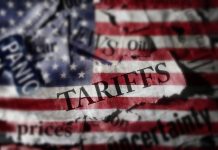By Matthew Oresman, London Managing Partner, Pillsbury
Global Economic System
Over the last year, much of the world has gone to the polls: The US, EU, UK, India, Mexico, and many more have chosen new leaders and a new direction. While the political leaders differ dramatically in ideology, voters were relatively unified in their demand: change, especially in policies affecting their personal economic situation. The response from those that won elections – whether liberal or conservative – was also strikingly similar: protectionism, especially justified by some national security excuse.
As a result, we are now entering a “patchwork quilt” global economic system. Globalization is not dead, but it is fractured. There are goods, services, and diplomatic and security relationships countries still need from each other, but governments are trending to be as protectionist as possible as part of a pursuit to improve the position of their own electorates.
While there have been significant benefits to globalization, many voters felt like they lost out. Under globalization, the belief was that the pie could grow infinitely. Under protectionist populism (or perhaps “Trump-ization”), the pie is finite and you have to fight for your slice.
This has led to all governments – whether liberal or conservative – to be much more protectionist. Their focus is now local job creation and investment. The policies we are seeing, especially those that impact international trade, reflect this.
These policies come in the form of differing sanctions, import, export, tax, foreign investment (especially in critical technologies), and incentive policies. Most recently, Donald Trump has threatened tariffs on Canada, Mexico, and China, as well as other BRICS countries, justified primarily by national security issues, including illegal migration, drug trafficking, and a defense of the dominant position of the U.S. dollar. To counter this, China is limiting the export of critical minerals to U.S. companies on the grounds that these companies threaten China’s national security by supporting U.S. aggression against China.
In this new patchwork quilt reality, the investment climate and rules are different depending on what square you are in. The rules that allow you to operate between squares are complicated and ever changing. And the rules also differ considerably depending on which two squares you are operating between: trade between the UK and the US, and the UK and China.
Not to belabor the analogy, but the era of “seamless” trade and business operations is over.
Business leaders should now be preoccupied more than before with multi-jurisdictional surveys and tax planning. Businesses need to understand and weigh competing risks and benefits in multiple jurisdictions. Global businesses need to be savvy about tying together the patchwork in a way that works for them. They also must be prepared for much harsher competition, including from rivals using government allies to create an advantage or impose new hurdles.
As executives consider where to do business or how best to manage risk, they should consider the following ten key points:
- Tariffs – Where will the cost of their, or their competitors’, imports go up or down?
- Export controls and supply chain limitations – Will they be able to export their products to customers in different countries? Will their competitors be able to secure critical components?
- Foreign investment limitation – Will foreign investment restrictions (CFIUS, NSIA, etc.) make it hard for them to raise money in a certain country? Will these rules protect them from a hostile takeover from a foreign investor?
- Data – How hard will it be for a company to move data from one country of operation to another?
- Employee migration – With immigration such a big issue, can the company get the talent it needs where it needs them?
- Aspiration rules – will the aspiration rules of a jurisdiction – those rules designed to make the world a better place, such as anti-sweat shop rules or the EU’s carbon border adjustment mechanism – drive up costs, or will they be limited by governments because of their inflationary impact?
- Innovation vs. safeguards – is the jurisdiction more interested in supporting new technology, such as AI or crypto, or in putting safeguards in place?
- Incentives – what incentives is the government offering to support investment, such as tax cuts or grants?
- Customers – which country has the most customers with the most available purchasing power?
- Cheap cash – which jurisdiction has the best interest rates and investor climate, including VC, PE, and stock markets, to support growth?
As an example, consider the current battle where the U.S. is limiting the export of advanced microchips to China, and China is limiting the export of rare earth metals to the United States. A German company might need both chips and metals and might want to export to both the U.S. and China. The new patchwork quilt of regulations makes this incredibly complex and may force the German company to move certain operations or limit its export of certain products depending on the component and destination.
Amongst all of this, businesses must remember the Buddhist truth that the only certainty is impermanence. The situation – and governments and their policies – will constantly change. For example, if you want to take advantage of new tariff regimes, but it will take you multiple years to move your plant, personnel, and technology, is it worth it if the government is going to change?
In this new world of rapid change, businesses need to be dynamic and ready to seize opportunity in a sea of ever shifting risks and rules.



































